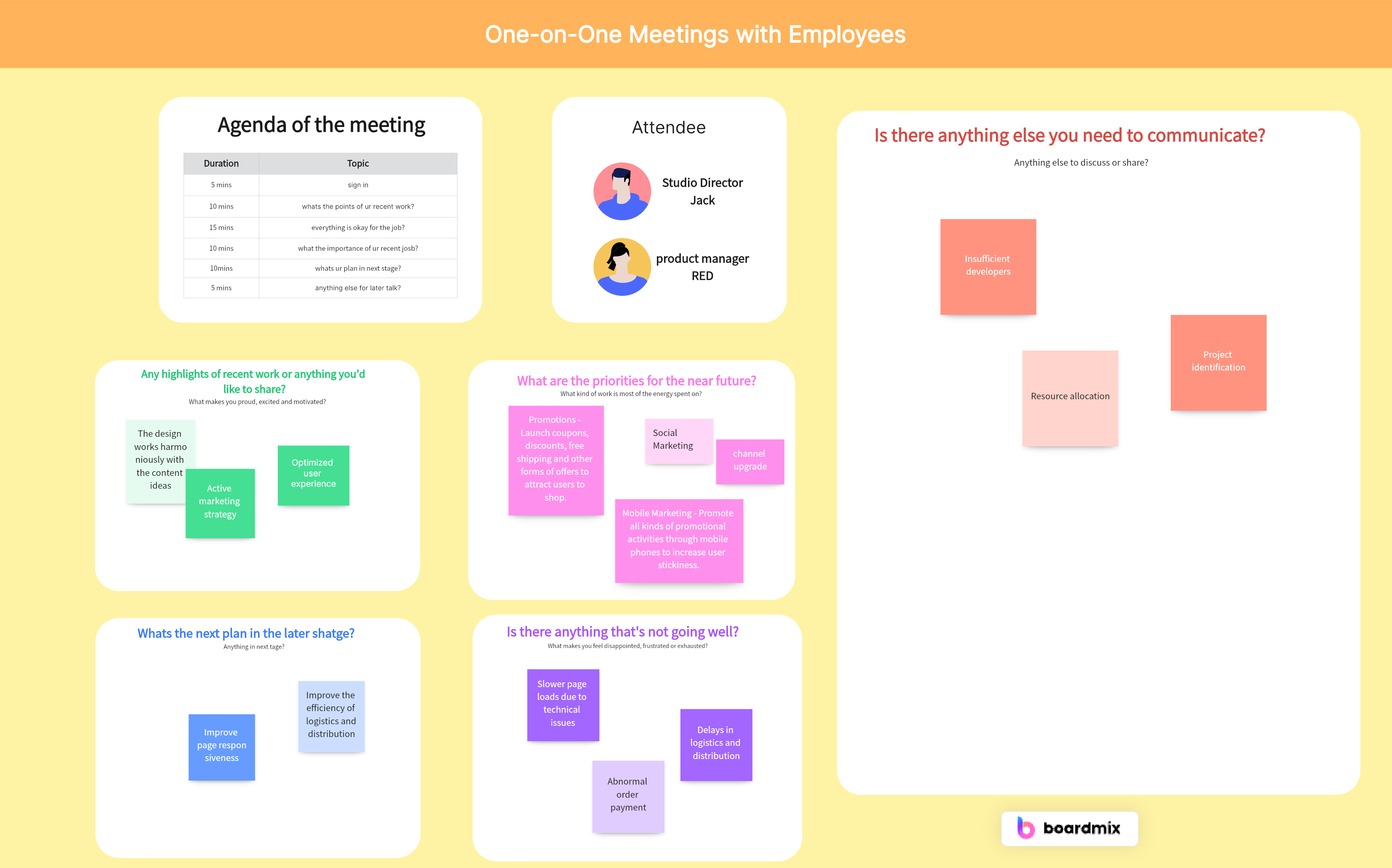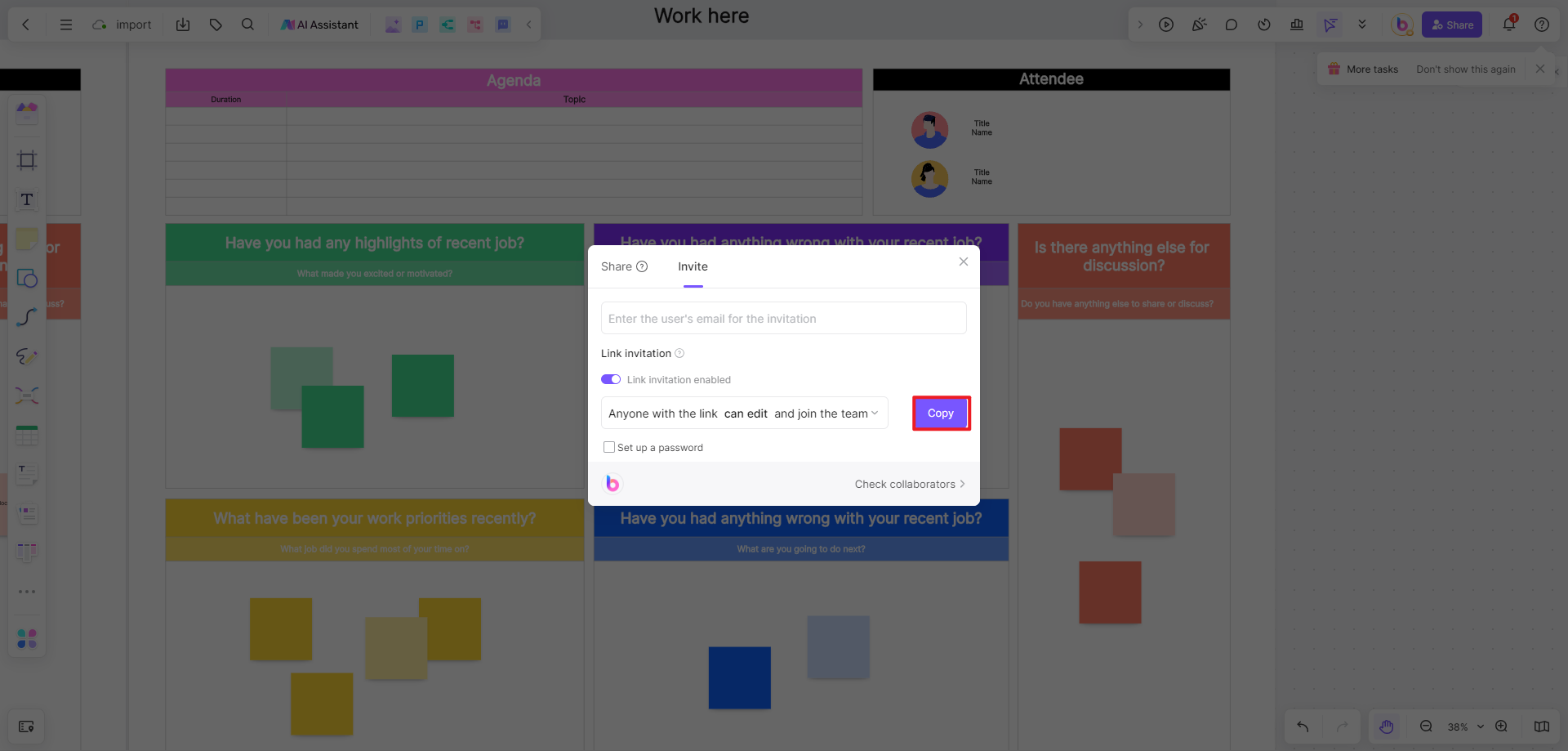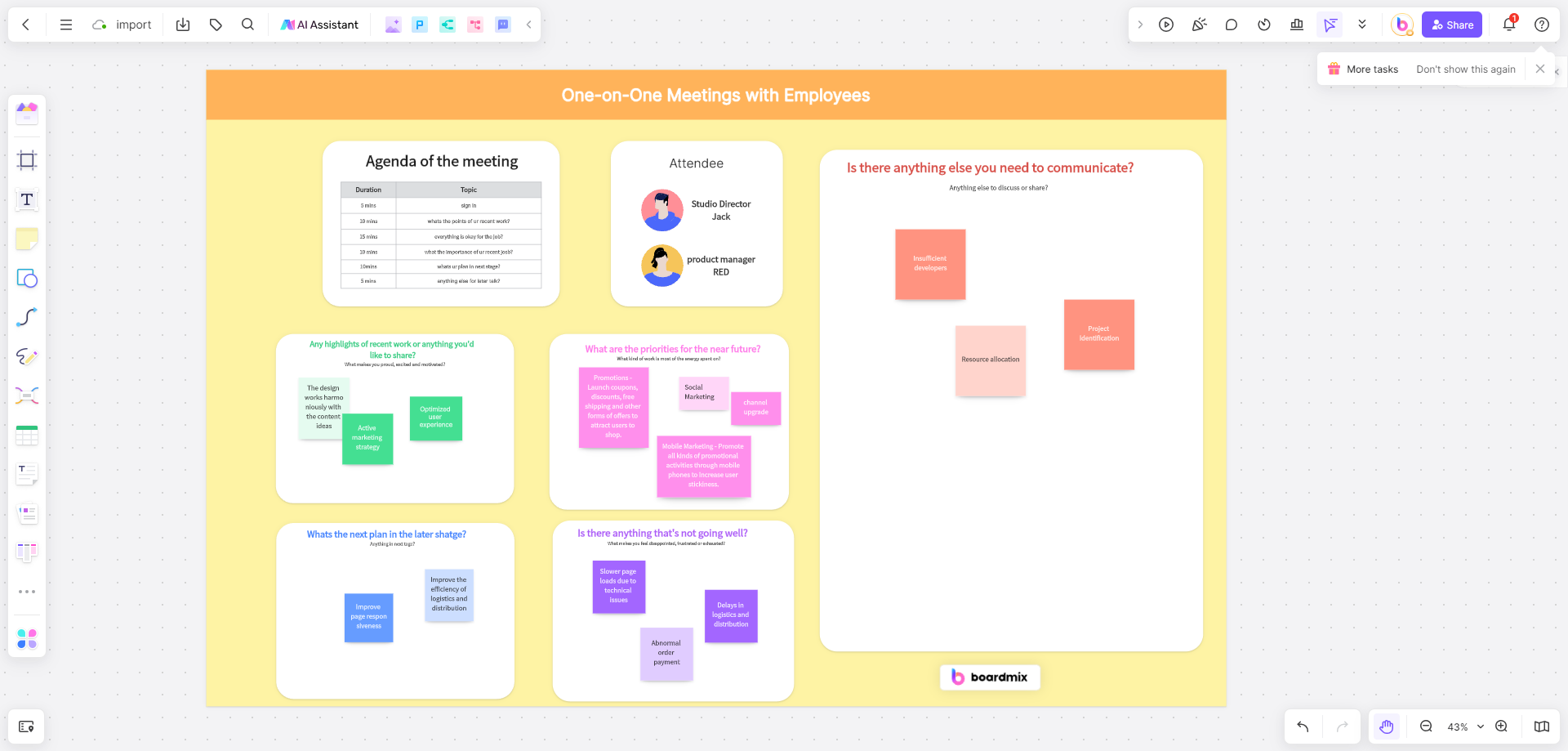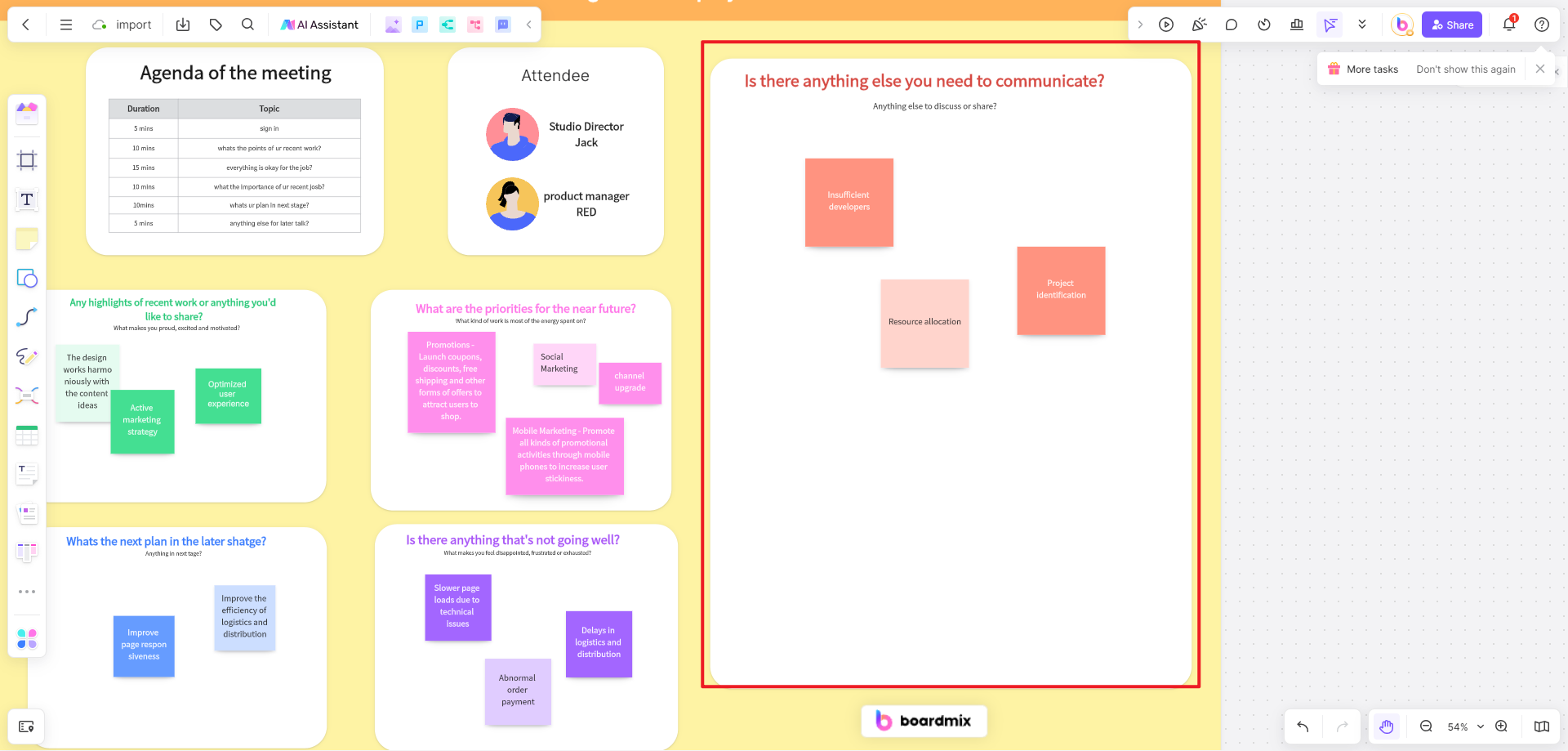What is the one-on-one meeting with employees?
A one-on-one meeting with employees is a dedicated time for a manager or supervisor to have a private conversation with an individual employee. It is an opportunity to discuss various topics such as performance, goals, feedback, development, and any other matters that may be important to the employee's job or career. These meetings are typically scheduled regularly, such as weekly, biweekly, or monthly, and provide a platform for open communication and relationship-building between the manager and the employee. The purpose of a one-on-one meeting is to address specific issues, provide guidance and support, clarify expectations, and foster a positive work environment.
10 Practical Tips for Conducting Effective One-on-One Meetings with Employees
- Set a regular schedule: Establish a consistent time and frequency for one-on-one meetings with each employee. This ensures that both parties can plan and prepare for the meeting in advance.
- Create a comfortable environment: Find a quiet and private space where you can have an uninterrupted conversation. This helps create a safe and comfortable atmosphere for open communication.
- Prepare an agenda: Before the meeting, outline the topics or questions you want to discuss. This ensures that the conversation stays focused and productive.
- Active listening: During the meeting, practice active listening by giving your full attention to the employee. Show genuine interest in what they have to say and ask follow-up questions to clarify their thoughts.
- Provide feedback and guidance: Use the one-on-one meeting as an opportunity to provide constructive feedback and guidance to the employee. Recognize their achievements, address any concerns, and offer suggestions for improvement.
- Set goals and expectations: Collaboratively set goals and expectations for the employee. This helps align their work with the overall objectives of the team or organization.
- Support employee development: Discuss the employee's professional growth and development opportunities. Identify areas where they can acquire new skills or knowledge and offer support in pursuing those opportunities.
- Problem-solving: If there are any challenges or issues that need to be addressed, use the one-on-one meeting as a platform to discuss and find solutions together. Encourage open dialogue and brainstorming.
- Respect confidentiality: Assure the employee that anything discussed during the one-on-one meeting will remain confidential unless it is necessary to involve others or address a larger organizational issue.
- Follow up on action items: At the end of the meeting, summarize the key points discussed and any action items that need to be taken. Follow up on these action items in subsequent meetings to ensure progress is being made.
By following these practical tips, you can conduct effective one-on-one meetings with employees that foster open communication, engagement, and growth within your team.
10 Good Questions to Ask Employees in One-on-One Meetings
Good questions to ask employees in one-on-one meetings can vary depending on the purpose and goals of the meeting. Here are some general questions that can help facilitate open and productive discussions:
- How are you feeling about your current workload? Is there anything I can do to support you?
- What progress have you made on your current projects or goals?
- Is there anything you would like to share about your accomplishments or challenges since our last meeting?
- Do you have any feedback or suggestions for improving our team or workplace?
- Are there any roadblocks or obstacles preventing you from reaching your goals?
- What resources or training do you need to succeed in your role?
- How can I best support your professional development and growth?
- Are there any areas where you feel stuck or need additional guidance?
- What is your preferred communication style and how can we ensure effective communication?
- Is there anything else you would like to discuss or any questions you have for me?
Remember, the specific questions you ask will depend on the individual and their role within the organization. It's important to create a safe and open space for employees to share their thoughts, concerns, and aspirations.
Start One-on-One Meetings with Employees with Boardmix Template
Starting one-on-one meetings with employees using a one-on-one meeting template in Boardmix can be a great way to ensure consistency and structure in your conversations. Boardmix offers a variety of templates that can help guide your discussions and make the most out of your time with each employee. Here are a few steps to get started.
1. Choose a Boardmix template
Boardmix provides ready-made templates for one-on-one meetings, you can select the template that aligns with the purpose of your meeting.

2. Customize the template
Once you've selected a template, customize it to fit the specific needs of the employee and the goals of the meeting. Add or remove sections as necessary, and tailor the questions or prompts to address the topics you want to cover.

3. Share the agenda
Before the meeting, share the agenda with the employee so they have an opportunity to prepare and gather any necessary information. This allows both parties to come to the meeting ready to discuss relevant topics.

4. Use the template as a guide
During the meeting, use the template as a guide to structure your conversation. Start with the predefined sections or questions and allow for open dialogue and additional topics to be discussed as needed.

5. Take notes
As you have the conversation, take notes directly within the template or on a separate document. This helps capture important points, action items, and any follow-up tasks that need to be addressed after the meeting.

6. Follow up on action items
After the meeting, review your notes and follow up on any action items or commitments made during the discussion. This demonstrates accountability and shows that you value the employee's input and growth.
By starting one-on-one meetings with employees using a Boardmix template, you can ensure that your conversations are focused, productive, and consistent across all members of your team.













